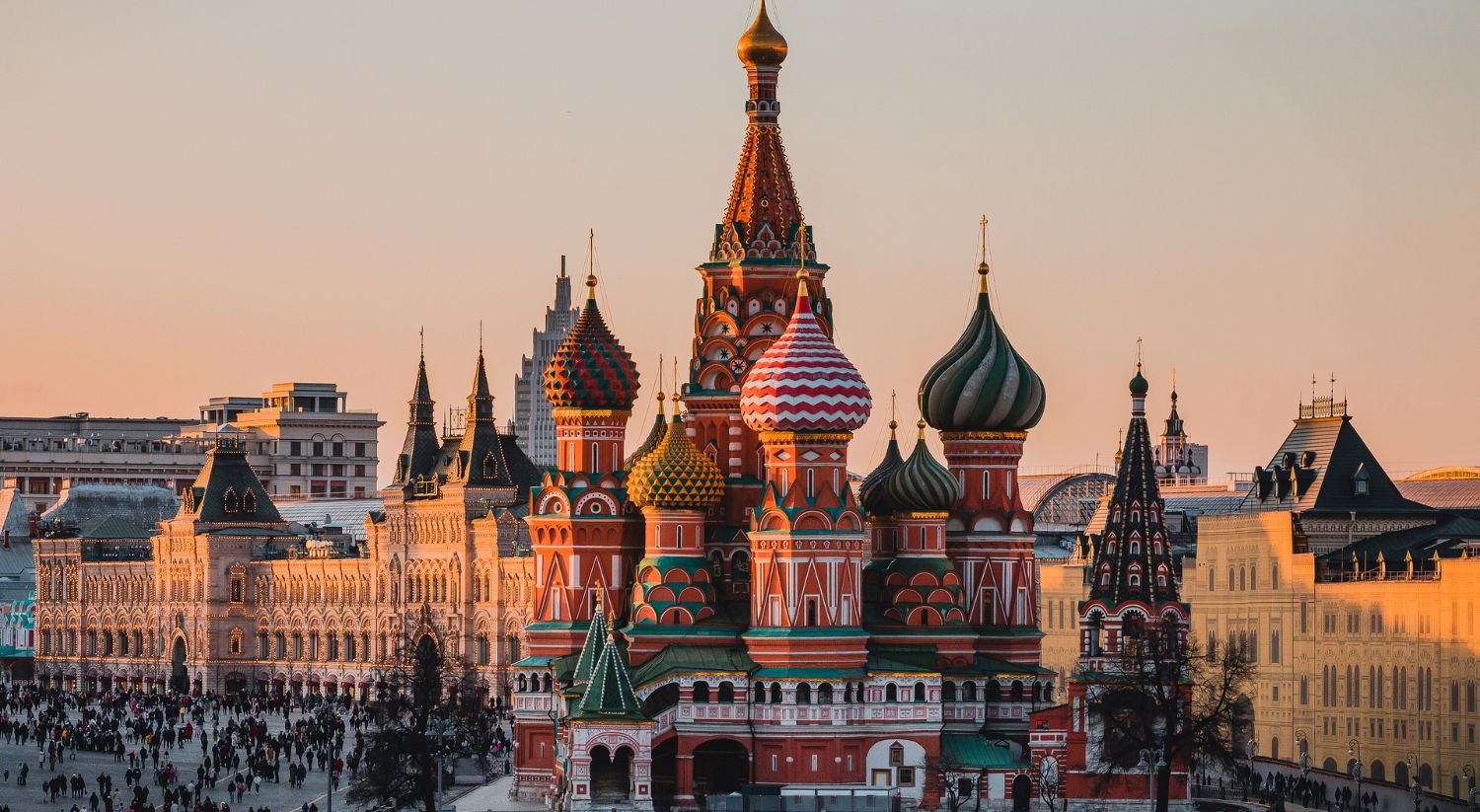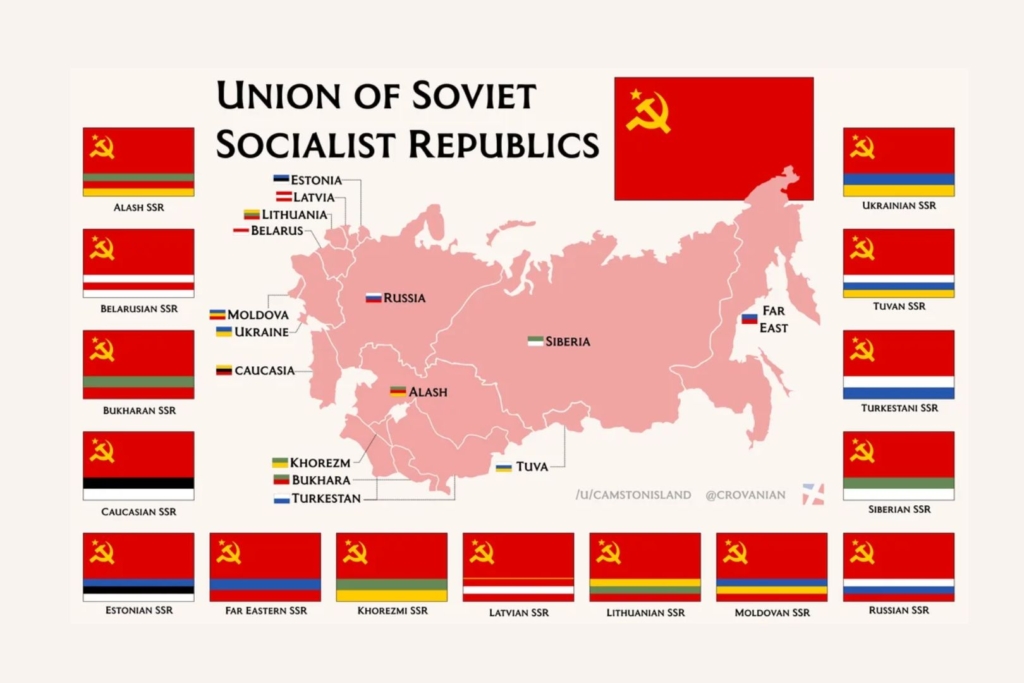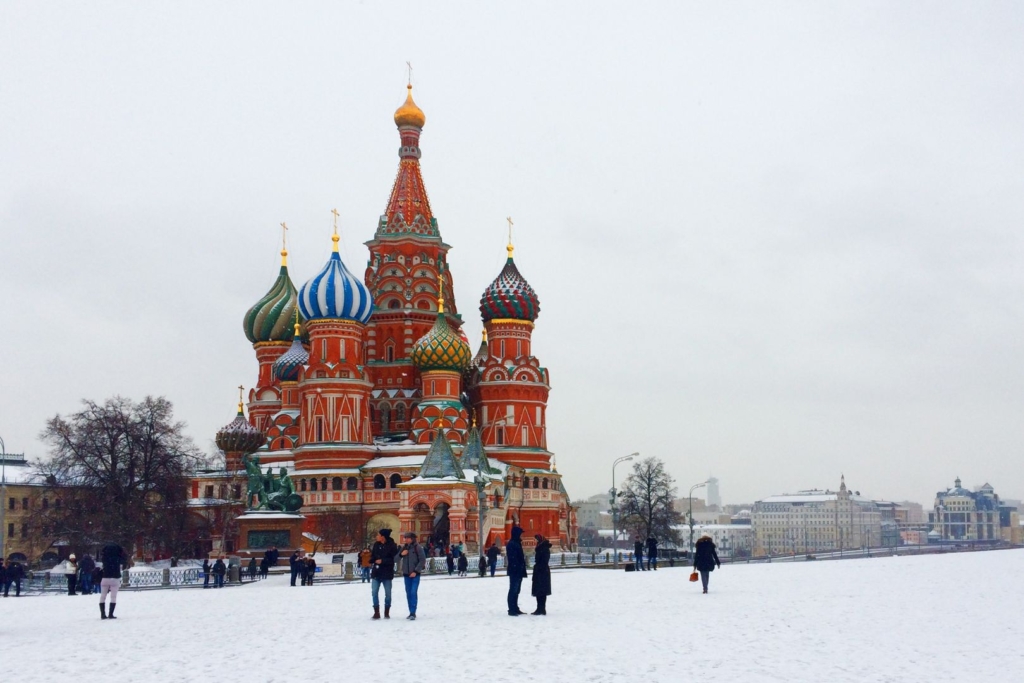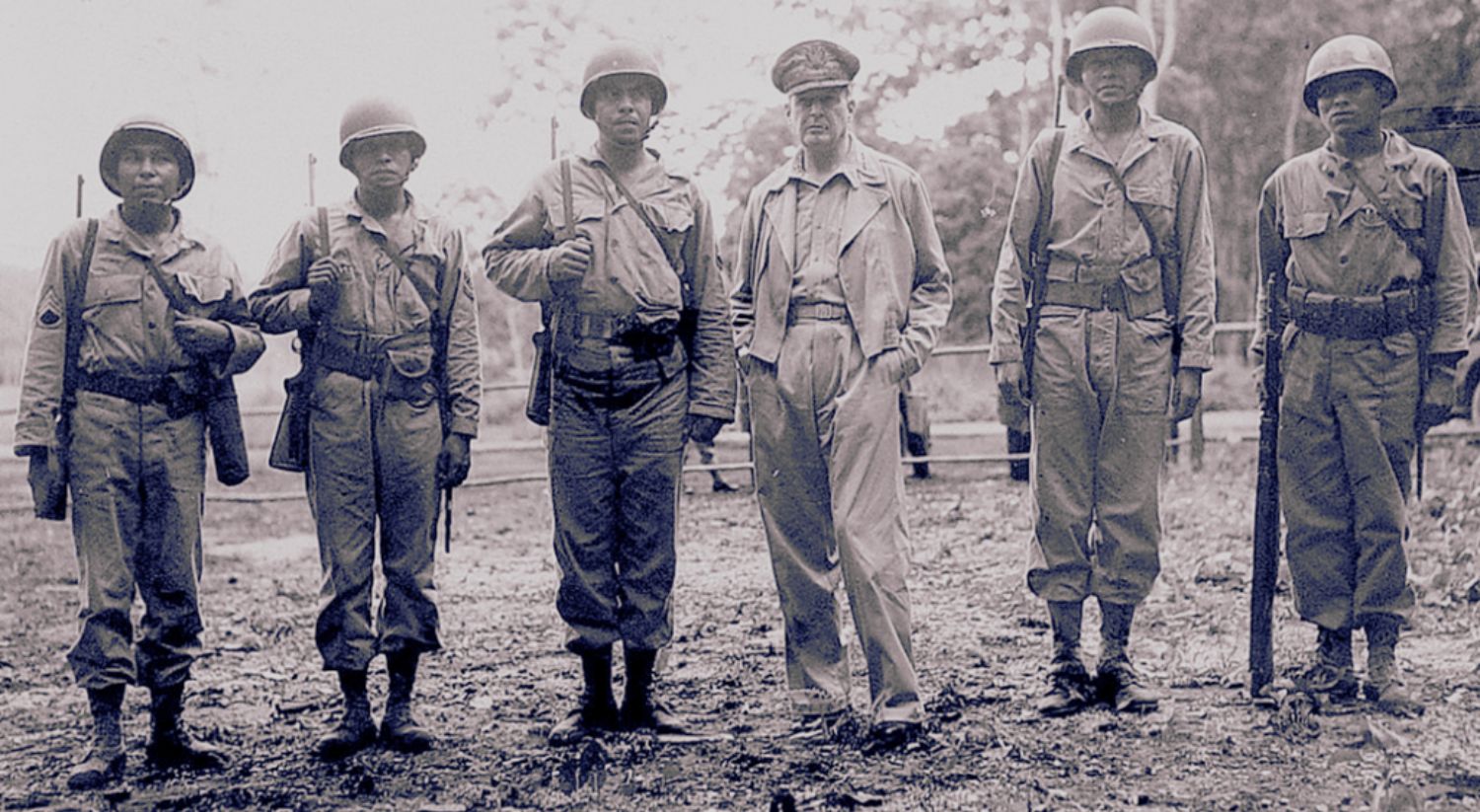
Russian isn’t the most spoken language on Earth—that title belongs to languages like Mandarin, English, or Hindi. However, Russian remains one of the most politically and economically influential languages of recent decades. Much of its global reach comes from the expansion of the Russian Empire in the 19th century and the Soviet bloc in the 20th century. Russian has been a powerful language of influence—at least across much of the world. And even today, its relevance is undeniable across all five continents.
Russia maintains strong trade relations with countries in Asia, Africa, Europe, and much of Latin America. Both Russian companies and the Russian government have done business around the globe.
Have you ever wondered about the linguistic roots of Russian? Have you thought about learning it, only to feel overwhelmed? Today, we’ll dive into this ancient yet incredibly relevant language.
Давайте учить русский язык! (Let’s learn Russian!)
But first…
What are the linguistic origins of Russian? History and evolution of the language
Have you ever wondered where the Russian language comes from and how it has evolved over the centuries? Russian is a rich and complex language spoken by over 250 million people worldwide. It’s a language that has stood the test of time and is associated with key figures in human history. Writers like Dostoevsky and Tolstoy wrote in Russian, as did Pushkin and Nekrasov. Russian was also spoken by Lenin, Stalin, and Trotsky, as well as by the Romanovs and countless other historical personalities. Clearly, it’s a language worth exploring.
Understanding the past of a language as intricate as Russian is also a way to understand its present and cultural identity. It’s not just one of the world’s most spoken languages—it’s the result of centuries of evolution, influence, and transformation. And that’s exactly what we’ll explore below: a fascinating journey for those looking to learn Russian or gain deeper insight into its cultural and linguistic context. Let’s take a closer look.
Linguistic origins of Russian: Slavic roots
Russian belongs to the Indo-European language family, one of the largest in the world. Within this family, it is part of the East Slavic branch, alongside Ukrainian and Belarusian. The Slavic languages are divided into three main groups: East Slavic, West Slavic, and South Slavic.
The roots of Russian trace back to around the 6th century, when Slavic tribes began expanding across Eastern Europe. These tribes spoke a common language that gradually developed into distinct dialects. Over time, these dialects evolved into independent languages with their own features.
It wasn’t until the rise of the Kievan Rus state in the 9th century that we can speak of a primitive East Slavic language—a foundational element of modern Russian. This early language shared grammar and vocabulary with Old Church Slavonic, a liturgical language used during the Christianization of the Slavic peoples.
Old East Slavic: The birthplace of Russian
Between the 9th and 13th centuries, the language known as Old East Slavic (старославянский язык) developed. It was the common language spoken in Kievan Rus and served as the basis for the grammar, phonetics, and lexicon of Russian today.
During this period, the language was heavily influenced by Church Slavonic, a variant introduced by the brothers Cyril and Methodius, who also created the Glagolitic alphabet.
This primitive alphabet would eventually evolve into the Cyrillic alphabet we know today. Church Slavonic facilitated the translation of religious texts and became widespread in ecclesiastical contexts. Its impact on Russian writing and terminology has been long-lasting.
As Kievan Rus fragmented, local dialects began to emerge—dialects that would eventually give rise to three distinct languages: Russian, Ukrainian, and Belarusian.
Mongol influence and the formation of Old Russian
From the 13th to the 15th centuries, the Mongol invasion ushered in a period of stagnation and transformation. The Golden Horde’s rule did not eliminate the Russian language, but it did leave some lexical traces and significantly influenced the region’s political and cultural trajectory.
It was during this time that a more recognizable form of Old Russian began to emerge—especially around the city of Moscow, which became the new political and cultural center of the Russian world. The Muscovite dialect gradually gained prominence over other East Slavic dialects.
Early Modern Russian: 17th to 19th Centuries
The transition toward modern Russian began in the 17th century, with increased contact with Western Europe. This change was largely due to the reforms of Peter the Great (1682–1725). His rule introduced linguistic and cultural modernization that reshaped the language.
Peter I encouraged the westernization of Russia, which included adopting loanwords from German, French, Dutch, and English, especially in the fields of science, technology, and government. He also supported the creation of a standardized literary language to unify written expression and facilitate communication across regions.
During this period, Russian began to clearly diverge from Church Slavonic, which became limited to strictly religious contexts.

Contemporary Russian: Evolution and expansion
In the 19th and 20th centuries, Russian entered a period of consolidation as a national language. Legendary writers like Pushkin or Dostoevsky elevated Russian to unprecedented literary heights. Their use of grammar, vocabulary, and style became the foundation of modern written Russian.
Following the 1917 Revolution and the Soviet Union, Russian was established as the official language of a vast, multinational territory that stretched across Asia and Europe. For decades, it served as the common language among republics with diverse languages and cultures.
This expansion had a dual effect: on one hand, it solidified Russian as a language of power and education. On the other hand, it led to the displacement of many minority languages, which were often reduced to limited co-official status within certain regions.
Throughout the 20th century, Russian absorbed numerous terms related to politics, technology, and science. Many of these came from English or French, reflecting the country’s modernization and growing global interactions.
Today, Russian continues to evolve and remains an essential language for global communication, business, and culture. Learning its history is not only key to understanding its structure—it also opens the door to appreciating one of the richest linguistic traditions in the world.
Russian today: Present and future outlook
As mentioned earlier, Russian is currently spoken by over 250 million people worldwide. It is the official language in Russia, Belarus, Kazakhstan, and Kyrgyzstan. Additionally, it serves as a co-official or widely used communication language in many regions across Eastern Europe, as well as in several Caucasus and Central Asian countries.
Moreover, Russian is one of the six official languages of the United Nations, underscoring its global significance. The language continues to evolve, especially with the rise of the internet, social media, and new generations of speakers. Regional dialects and informal usage have led to an expanded vocabulary and noticeable changes in speech patterns.
Today, learning Russian is not only valuable for academic or professional reasons—it also offers access to a rich, complex culture with deep historical significance.
Still, one question often comes to mind:
How difficult is it to speak Russian?
Let’s explore some fascinating facts about the language.

Linguistic curiosities of Russian and main challenges when learning it
If you’re considering learning Russian or have already started your journey with this fascinating language, this is for you. You’ve probably come across unusual expressions and unique grammatical structures. You may have also heard sounds that don’t exist in your native language. And although Russian might seem intimidating at first, once you get to know it, you’ll realize it’s not as hard as it looks. The key is understanding its quirks and the challenges it presents. That way, you’ll approach it with a more informed, realistic, and motivated attitude.
A language with deep roots and surprising twists
Russian is an East Slavic language that belongs to the Indo-European language family. And here’s a surprise: Russian shares linguistic roots with Spanish, English, and German. But despite this distant common ancestry, it has evolved in very different ways. It has preserved complex grammatical structures and distinctive phonetics, which make it both fascinating and challenging to learn.
Let’s take a look at some of the most curious features of the Russian language:
The Cyrillic alphabet: Easier than you think
One of the first things that stands out when learning Russian is its Cyrillic alphabet, which contains 33 letters. At first glance, it might look like a secret code. But in reality, many letters have direct equivalents to familiar sounds, which makes learning it surprisingly fast—especially with the help of AI-powered translation tools like Talkao.
One quirky aspect of the Cyrillic alphabet is that some letters look like Latin characters but sound different. For example:
- The letter “H” sounds like an “N”
- “B” sounds like “V”
- “P” sounds like “R”
This visual trickery is one of the first hurdles for beginners. But once you get past it, the alphabet becomes a powerful tool for reading and speaking correctly. With Talkao Translate and its smart dictionary, mastering the Cyrillic alphabet becomes much easier.
No definite or indefinite articles
Russian doesn’t use articles like “the” or “a/an.” This means you’ll need to rely on context to understand the intended meaning. For example, the phrase:
- “Я читаю книгу”
Can mean:
- “I’m reading a book” or
- “I’m reading the book”
So, how do you know which one it is? There are no specific rules—it all depends on the situation and the context.
While this might seem like an advantage for Spanish or English speakers, it can actually be challenging at first. Why? Because you’ll be tempted to translate directly, but what you really need to do is focus on the conversation. Luckily, there’s a shortcut: Talkao’s real-time translation feature. This tool helps you grasp the context instantly, making communication feel natural sooner than you’d expect.
The case system
Without a doubt, one of the most complex aspects of Russian is its grammatical case system. Russian has six main cases:
- Nominative
- Accusative
- Genitive
- Dative
- Instrumental
- Prepositional
Each case changes the form of nouns, adjectives, and pronouns depending on their role in a sentence. That means a single word can take multiple endings based on the case. This requires consistent focus and effort to learn the rules—and the exceptions. For instance:
- стол (stol) = table (nominative)
- стола (stolá) = of the table (genitive)
- столу (stolú) = to the table (dative)
Although tricky at first, the case system gives you greater flexibility to reorder sentences without changing the meaning—a unique feature that can be empowering once mastered.
Untranslatable words and unique expressions
Russian has countless words that don’t have a direct translation into English or Spanish, which reflects the depth and richness of Russian culture. One famous example is:
- Тоска (toská): A word that captures a mix of melancholy, longing, existential sadness, and nostalgia. The writer Nabokov once said it was impossible to translate.
You’ll also come across expressions that reveal a completely different worldview. For example:
- “Без труда не вытащишь и рыбку из пруда”
Which literally means: “Without effort, you won’t even catch a fish from the pond.”
It’s the Russian equivalent of: “No pain, no gain.”
These unique elements not only make learning Russian more engaging, but they also bring you closer to a deeply introspective and emotionally rich culture.
In summary, Russian may have its challenges, but its beauty, logic, and expressiveness make it a deeply rewarding language to learn. With the right tools—like Talkao’s smart translators and real-time assistance—you’ll be better equipped to navigate its complexities and enjoy the journey.
Main challenges when learning Russian
Now that you’re familiar with some of the unique features of the Russian language, it’s time to look at the most common obstacles—especially those you’ll face as a learner. Being aware of these challenges from the start will help you move forward with less frustration. Let’s go through the most frequent ones:
Pronunciation and unfamiliar sounds
Russian includes sounds that don’t exist in English, such as the guttural “ы” or the soft and hard signs “ь” and “ъ”. These characters affect how consonants are pronounced. Additionally, Russian has a highly variable stress system, meaning that the same word can completely change its meaning if the stress is placed incorrectly.
The best way to overcome this challenge is through constant speaking practice and listening to native audio recordings. One of the most effective strategies is to use AI-powered translation tools like Talkao, which you can download to your phone to improve your listening and pronunciation skills.
Extensive and unfamiliar vocabulary
Unlike Spanish, Russian shares very few lexical roots with English, which means memorizing new words requires extra effort. However, with mnemonic techniques, flashcards, and consistent exposure, you can build your vocabulary base quickly. Talkao’s smart dictionaries and AI translation features play a crucial role in this process.
Motion verbs and verbal aspect
Russian verbs are conjugated by person and tense, but there’s more: each verb also has an imperfective or perfective aspect. In other words, actions can be expressed as ongoing or completed, using different verbs accordingly. This becomes even more complex with motion verbs, where multiple forms exist depending on direction, mode of transportation, and frequency of the action.
Motivation and consistency
Russian is not a language you’ll master in a couple of weeks. It requires patience, practice, and ongoing motivation. Many learners give up after facing the first major hurdles. But if you maintain a clear goal, it’s much easier to stay on track. Also, relying on today’s advanced learning tools will make the process much smoother.
For example, if you’re struggling with Cyrillic, try Talkao’s camera translator. It allows you to translate without typing, significantly accelerating your learning journey.
Russian is challenging, but deeply rewarding
Learning Russian is far from easy—but it’s one of the most rewarding experiences for any language enthusiast. Mastering Russian allows you to explore a rich, centuries-old culture and read literary masterpieces in their original form. You’ll also be able to communicate with millions of people and access new academic and professional opportunities.
Moreover, being fluent in Russian gives you a competitive edge in global business and diplomacy. You’ll be equipped to translate, negotiate, and collaborate with investors and companies of major international influence.
Before you start, take a moment to review some of the most common Russian phrases. They’ll give you a solid foundation to begin your journey with confidence.
Some phrases in Russian to start speaking it
Greetings, farewells and useful phrases
| Greetings in Russian | ||
|---|---|---|
| Russian | English | Pronunciation |
| Привет | Hi (informal) | Privet |
| Здравствуйте | Good morning/afternoon/night (formal) | Zdravstvuyte |
| Пока | Bye (informal) | Poka |
| До свидания | See you later (formal) | Do svidaniya |
| Introduce yourself in Russian | ||
|---|---|---|
| Russian | English | Pronunciation |
| Меня зовут… | My name is… | Menya zovut… |
| Как вас зовут? | What is your name? | Kak vas zovut? |
| Я из… | I’m from… | Ya iz… |
| Очень приятно | Nice to meet you | Ochen’ priyatno |
Emergencies
| Emergencies in Russian | ||
|---|---|---|
| Russian | English | Pronunciation |
| Помогите! | Help! | Pomogite! |
| Мне плохо | I’m sick | Mne plokho |
| Позвоните в скорую | Call an ambulance | Pozvonite v skoruyu |
| Где ближайшая больница? | Where is the Hospital | Gde blizhayshaya bol’nitsa? |
Numbers in Russian
| Numbers in Russian | ||
|---|---|---|
| Russian | English | Pronunciation |
| Один | 1 | Odin |
| Два | 2 | Dva |
| Три | 3 | Tri |
| Четыре | 4 | Chetyre |
| Пять | 5 | Pyat’ |
| Шесть | 6 | Shest’ |
| Семь | 7 | Sem’ |
| Восемь | 8 | Vosem’ |
| Девять | 9 | Dev’yat’ |
| Десять | 10 | Desyat’ |










Newsletter